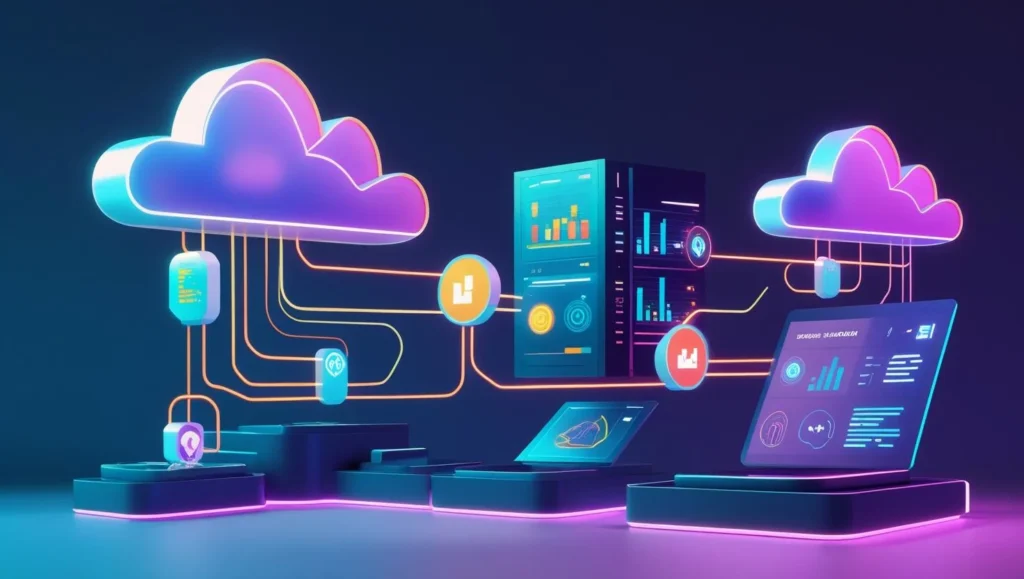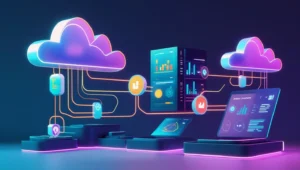Want to learn how to build these pipelines from scratch? 👉 Join our Data Engineering Bootcamp
Intro: Every Insight Starts With a Pipeline
Every amazing data dashboard or ML model starts with one thing: data engineering. But what really happens behind the scenes from the moment data is captured to the point it becomes a pretty chart?
Let’s walk through the end-to-end lifecycle of data engineering, stage by stage, tool by tool, in simple terms.
Stage 1: Data Ingestion
What It Means:
Bringing raw data from various sources into your data system.
Common Sources:
- APIs (social media, e-commerce)
- Databases (MySQL, PostgreSQL)
- Logs (web servers, app usage)
- Files (CSV, Parquet, JSON)
Tools:
- Apache NiFi
- AWS Glue
- Kafka
- Fivetran, Stitch
Stage 2: Data Storage
Where Does Data Sit?
Once ingested, data must be stored somewhere safe and scalable.
Options:
- Cloud storage: AWS S3, GCP Cloud Storage
- Warehouses: Snowflake, BigQuery, Redshift
- Data Lakes: Delta Lake, Lakehouse
Stage 3: Data Processing
Raw to Refined:
Transforming raw data into usable format, cleaning, merging, enriching.
Types:
- Batch (e.g., daily jobs)
- Streaming (real-time updates)
Tools:
- Apache Spark
- Apache Flink
- dbt (data build tool)
Stage 4: Data Orchestration
Keeping It All in Sync:
Scheduling and managing all data tasks.
Tools:
- Apache Airflow
- Prefect
- Dagster
Stage 5: Data Transformation
Why Transform?
Make data usable for business logic: filtering, joining, formatting.
Example:
Combine “orders” and “customers” into a sales view.
Tools:
- dbt
- Spark SQL
- Pandas
Stage 6: Data Storage (Post-Transformation)
This is where your analytics-ready data lives.
- Data Warehouses (Snowflake, Redshift)
- BI-Ready Tables (Star Schema, Data Marts)
Stage 7: Data Visualization
The Final Mile:
Make your data tell a story.
Tools:
- Power BI
- Looker
- Tableau
- Metabase
Lifecycle Diagram
[Ingestion] → [Storage] → [Processing] → [Transformation] → [Storage] → [Visualization]Key Roles in the Lifecycle
- Data Engineer: Builds the pipeline
- Analytics Engineer: Focuses on transformation and modeling
- Data Analyst: Uses the final data for insights
FAQs:
- What is the data engineering lifecycle?
It refers to all stages from data ingestion to final visualization.- Which tools are best for ingestion?
Kafka, NiFi, AWS Glue, Fivetran.- What is the difference between batch and streaming?
Batch = periodic loads; streaming = real-time data flow.- Do I need a data lake and a warehouse?
Not always. It depends on scale and business need.- Where does dbt fit in the lifecycle?
In the transformation stage, post-ingestion and processing.- What’s the role of Airflow?
Orchestration. It schedules and monitors jobs.- Is Python used in data engineering lifecycle?
Yes, heavily in scripting, ETL, and processing.- What is a data mart?
A subject-specific slice of data warehouse for BI use.- What are best practices for pipeline monitoring?
Use logging, alerts, and observability tools like Datadog.- How do I test data pipelines?
With unit tests, assertions, and data quality checks.- Can I visualize streaming data?
Yes, using tools like Grafana or Power BI with push datasets.- How to choose the right cloud platform?
Depends on existing infra, cost, team skillset.- What are Star and Snowflake schema?
Data modeling techniques used in data warehouses.- Which stage is most error-prone?
Transformation — due to logic and edge cases.- Can this lifecycle be automated?
Yes, using orchestration + CI/CD pipelines.



